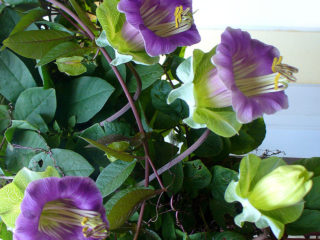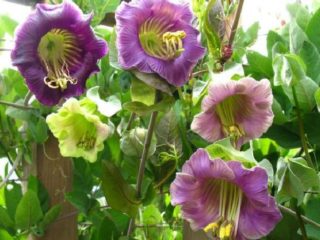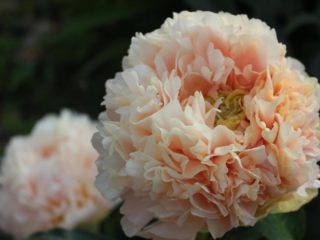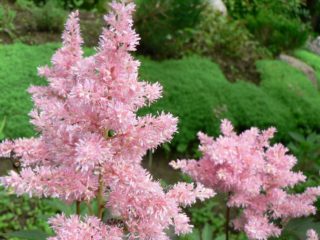Content
Growing kobei from seeds at home is fraught with some minor difficulties, which are worth contemplating a magical liana with flowers of amazing beauty on your garden plot throughout the summer. This is a perennial shrub of the Sinyukhovye family, whose homeland is considered to be Mexico. In its natural habitat, a climbing plant with complex-pinnate leaves, capable of creating a rich green carpet on any support, grows in the humid tropics and subtropics of North and South America. The algorithm for growing cobei from seeds, together with a photo, allows you to study in more detail the main stages of work on the cultivation of a Mexican decorative liana.
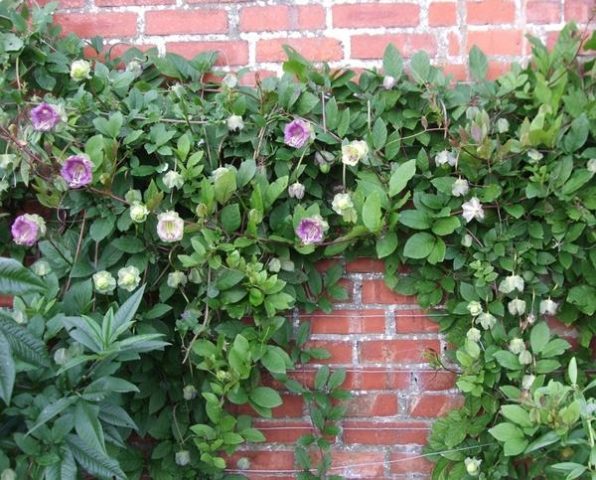
Since the end of the 18th century, culture has been actively used as an effective element of vertical gardening, hedges
The nuances of growing kobei seedlings
Experienced growers recommend growing kobei from seeds of the last harvest or purchased in specialized stores, since germination is more dependent on age. Sowing kobei for seedlings will have to be carried out independently, since the plant needs a fairly long period of time from germination.
In the process of development of seedlings, a kobee needs a lot of space, since the plant quickly gains height, it needs support. Each seedling sample is grown separately so that the bushes do not intertwine with each other, the stem does not wind around the main stem, does not catch on various objects.
Since the tropical vine grows at a rapid pace, the seedlings of kobei should be moved to open ground in a timely manner, not overexposed indoors, so as not to complicate the transplanting process.
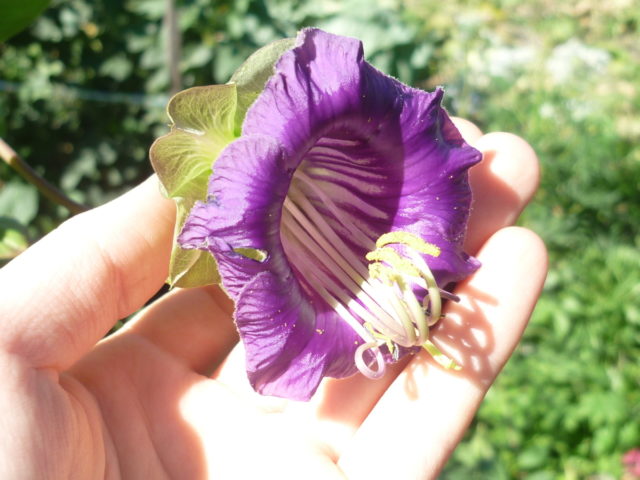
In order for an adult plant to please the eye with abundant flowering, the seedlings should be sown in a timely manner, pinned, tied up
How to plant a kobei for seedlings
Before sowing kobei for seedlings, the seeds should be pre-prepared and properly cared for. There are several basic sowing rules, the observance of which will ensure a positive result:
- firstly, it is necessary to observe the timing of sowing seeds;
- secondly, you should prepare a suitable container and a soil comfortable for the plant;
- thirdly, you need to choose the right seed and place the seeds in the soil mixture.
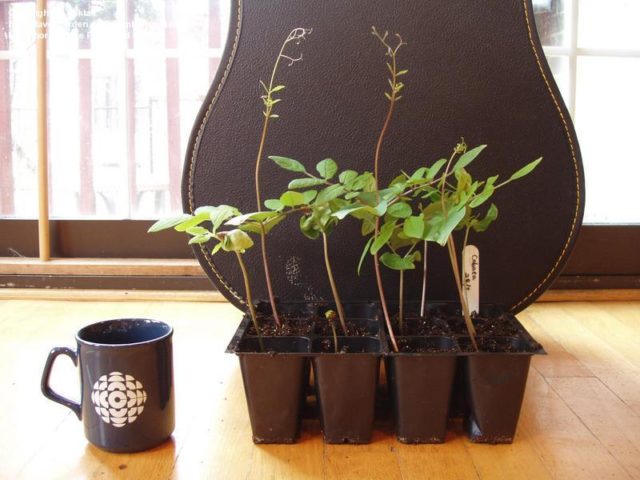
Seedlings of Mexican liana feel comfortable at room temperature, while young shoots should be protected from drafts
When to plant kobei seeds for seedlings
Sowing seed should be done in late February or early March. The period of growth of seedlings of decorative culture lasts several months. Healthy seedlings are planted in the ground after 2-3 months: at the end of May or at the beginning of June.
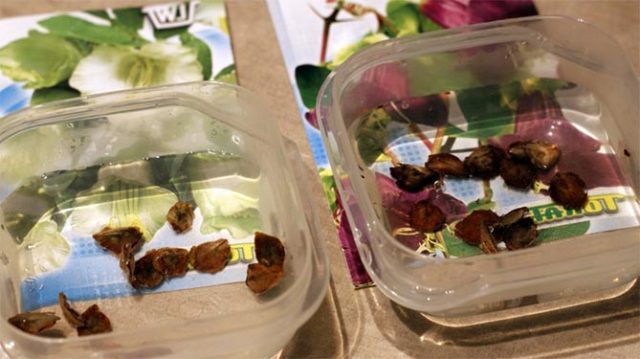
Late February, early March is the ideal time to sow kobei seedlings
The choice of capacity and preparation of the soil
The soil for the germination of Kobei seeds should be close to the composition of the soil of tropical forests, differ in air and moisture permeability. Universal soil for seedlings can be prepared from equal parts of the following components:
- river sand;
- humus;
- leafy land;
- sod land.
For planting kobei seeds for seedlings, individual containers should be used so as not to injure delicate shoots when diving.
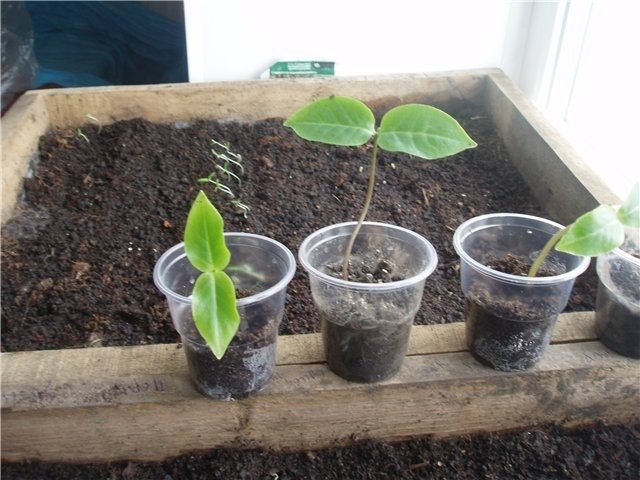
For sowing kobei seedlings, single containers, peat pots, plastic or paper disposable cups are suitable
Seed preparation
Since kobei seeds are fairly large seeds with a dense shell, their natural germination can be difficult. To grow a kobei from seeds at home, you need to carefully prepare. For this, the seeds are laid out on the bottom of any suitable container (plate, lid, container) at a short distance from each other, avoiding contact. Seeds are poured with water, covered with a lid to prevent moisture evaporation.
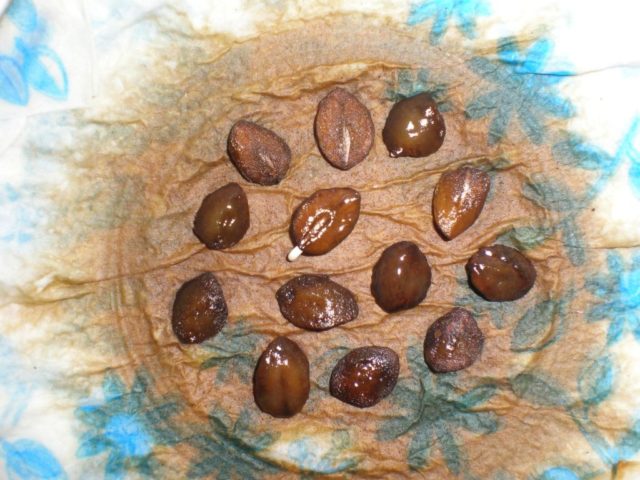
After significant deoxidation of the crust, the upper shell is removed in several steps over several days.
How to plant kobei seeds
Experienced growers are advised to start growing a kobei flower from seeds in February-March. It is important to injure the plants to a lesser extent during the obligatory pick. To germinate a kobei from seeds, it is necessary to plant the germinated grains, freed from the hard shell, one at a time in individual containers with soil mixture, peat pots, cups or tablets.
The seed is placed in the substrate with the flat side down, sprinkled with earth (up to 1-1.5 cm).

2 weeks after sowing the seeds of the kobei, the first shoots appear
How to grow a kobei from seeds
Growing a kobei flower from seeds is possible at home, subject to the basic rules of care. Tropical liana as a whole is quite unpretentious in care, but requires a comfortable microclimate, periodic watering and feeding, hardening. For the formation of beautiful bushes, the plant should be pinned at the stage of formation of the main shoot.
Microclimate
In order for the seedlings to develop correctly, a comfortable microclimate should be provided. Kobeya "prefers" lighted, warm places in a heated greenhouse, on a windowsill in a house or apartment.

The maximum allowable temperature for germination of kobei seeds is 18-20 ° С
Watering and feeding schedule
Kobei seedlings need regular weekly feeding from the moment the first leaves appear. Experienced flower growers recommend using and alternating between Humat, Kemiru (mineral complex), Mullein (organic additive).
Watering kobei is carried out periodically, without waterlogging or overdrying the soil, in order to avoid decay of the root system.
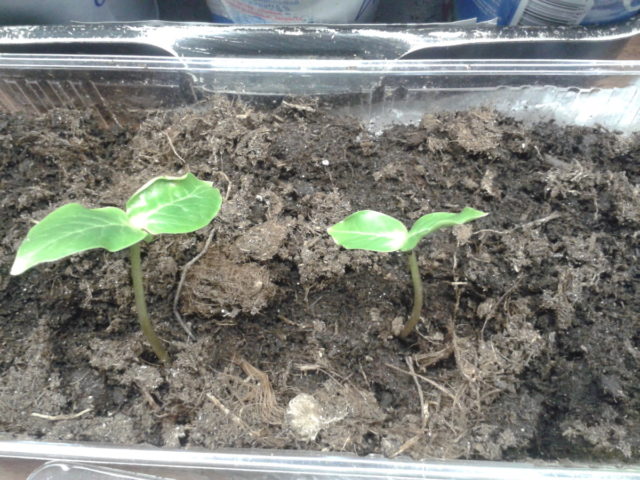
On hot and sultry days, seedlings are watered more often and more intensively.
Picking
Since the seeds of the plant must be immediately planted in individual containers, they do not need a pick.
With the appearance of kobei seedlings on the sprouts, two true leaves of the plant are transplanted into pots with a volume of up to 3 liters along with a lump of earth. This allows the development of a fairly healthy root system, strong main shoots.
In addition, kobei seedlings need support in the form of a metal, plastic or wooden ladder to which the plant will cling.
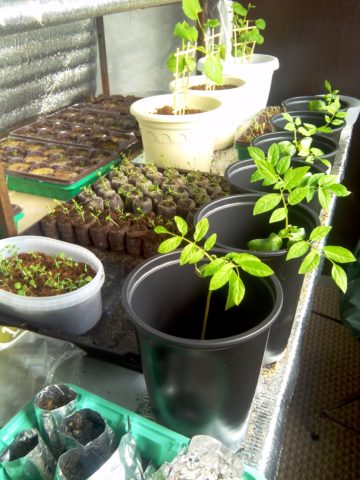
To form a beautiful bush shape, experts recommend pinning the kobei after the appearance of the second pair of young leaves
Hardening
Hardening of seedlings is carried out before transplanting plants into open ground. These manipulations will allow the plant to get used to the cool air of the street. The total duration of daily hardening procedures is 3 weeks, they take place in two stages:
- In the afternoon, kobei seedlings are placed in a warmed and glazed, but cool enough place for several hours (1-2) (loggia, balcony, veranda).
- On warm days, the bushes are "taken out on a street walk", which lasts up to 1 hour.
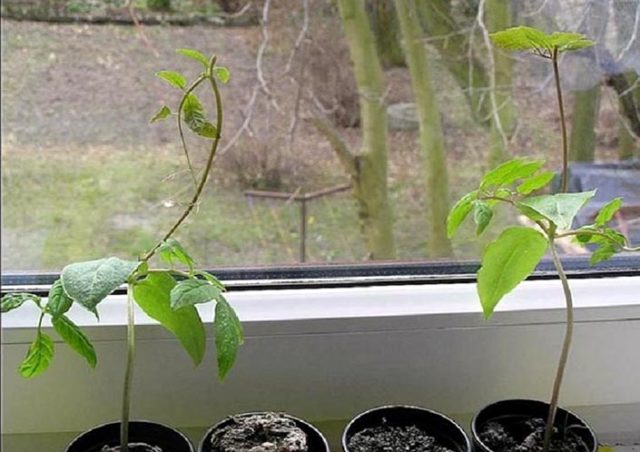
Gradually, the time of the “street” walk is increased so that the plant gets used to the cool air.
Transfer to the ground
Kobei is transplanted into open ground at the beginning of summer or in the last days of May, after the establishment of a fairly stable warm weather without night frosts (with a night temperature limit of at least + 5 ° C).
As a “permanent place of residence” for a kobei, it is necessary to choose plots of land with sufficient natural light, fertile soil, and no drafts. A large amount of sunlight during the day stimulates a particularly abundant, long-lasting, spectacular flowering of bell-shaped inflorescences of lilac, yellowish, greenish shades.
A mixture of loose peat, humus, turf soil is placed in shallow pits (up to 50 cm). From pots, seedlings of kobei, together with a lump of earth, are placed in holes, sprinkled with soil, pressed and watered abundantly. Seedlings are planted in open ground at a distance of up to 1 m between individual plants. For kobei, supports must be installed, or planted in the area of arches, fences, walls.
Adult plants need constant loosening of the soil, removal of weeds, sufficient watering, weekly feeding with nitrogen-containing preparations, potash and phosphorus fertilizers.
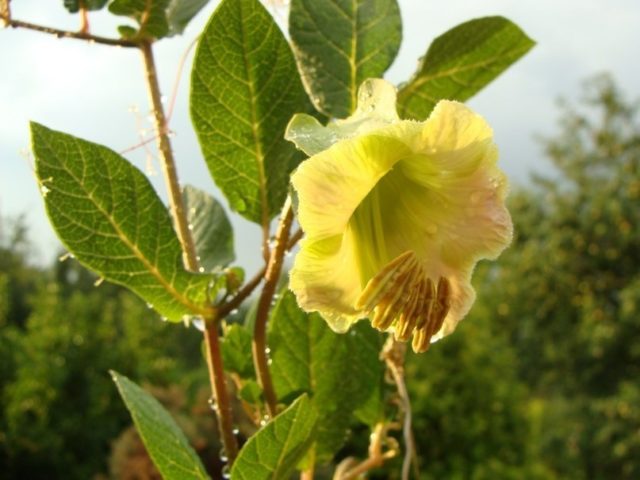
With proper care, flowering kobei occurs 17-18 weeks after sowing the seeds.
Collection and storage of seeds
Kobeya is an amazing tropical culture that pleases with the magical flowering of fairy bells from July until the first frost appears. Seeds are harvested in autumn, because in the natural conditions of temperate latitudes, seeds are not preserved due to the cold winter.
The seed capsules of the kobei are collected, dried, and dark seeds are taken out, which are stored before sowing in a dry place, mainly in paper bags. It should be remembered that the material may be immature, so its germination rate is up to 30%.
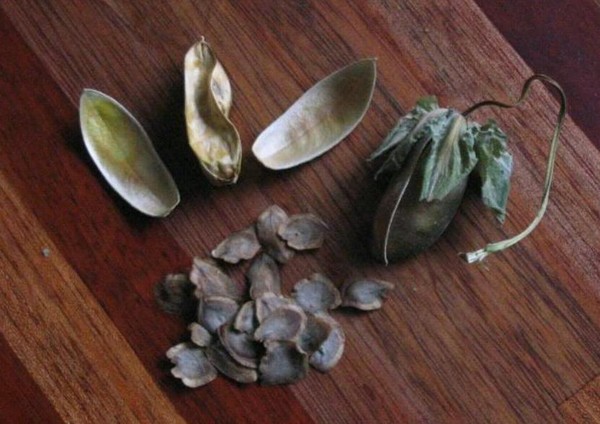
Experienced flower growers recommend purchasing kobei seeds in specialized stores.
Conclusion
Growing cobei from seeds at home allows you to get gorgeous, abundantly flowering Mexican vines in any garden plot. A tropical plant is considered unpretentious. The decorative curly look is successfully used in the design of landscape areas of various stylistic directions.
